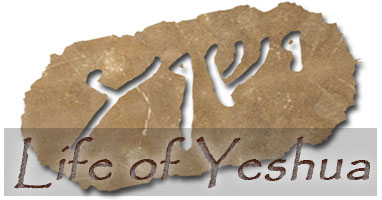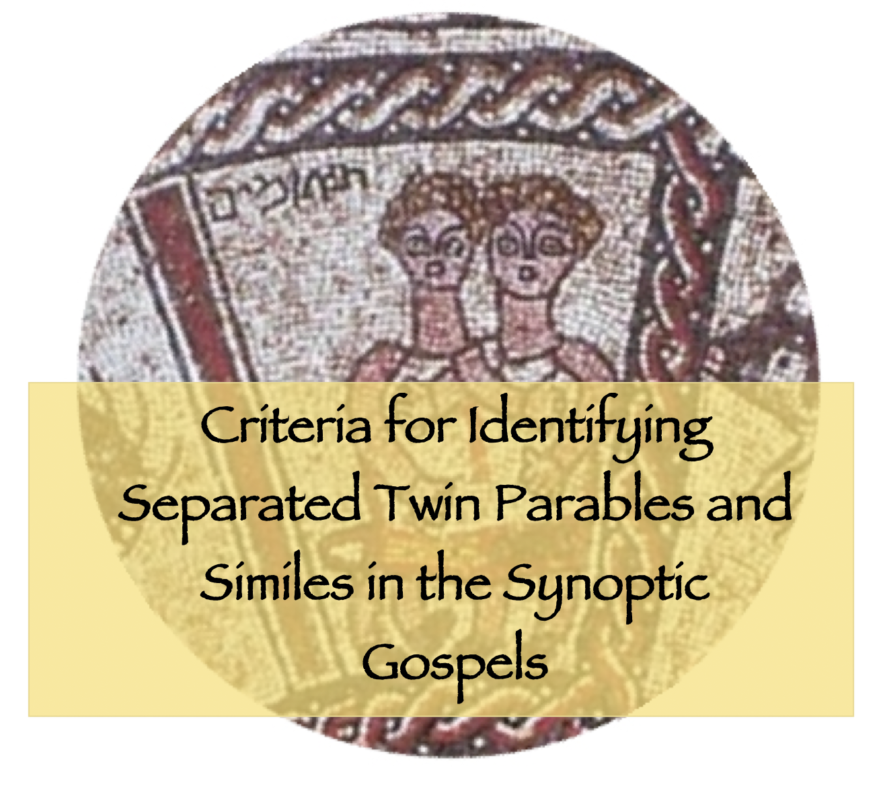Updated: 11 October 2023
Anyone acquainted with the Synoptic Gospels knows that some of Jesus’ parables and similes are twins.[5] For example, Hidden Treasure and Priceless Pearl appear as a pair (Matt. 13:44, 45-46), Tower Builder and King Going to War (Luke 14:28-29, 31-32) do the same, as do Lost Sheep and Lost Coin (Luke 15:4-7, 8-10) and Mustard Seed and Starter Dough (Matt. 13:31-32, 33; Luke 13:18-19, 20-21).[6] With respect to the examples we have just mentioned, the twin parables and/or similes not only resemble one another, they also appear adjacent to one another in at least one of the Synoptic Gospels.[7]
Premium Members and Friends of JP must be signed in to view this content.
If you are not a Premium Member or Friend, please consider registering. Prices start at $5/month if paid annually, with other options for monthly and quarterly and more: Sign Up For Premium
 Click here to return to The Life of Yeshua: A Suggested Reconstruction main page.
_______________________________________________________
Click here to return to The Life of Yeshua: A Suggested Reconstruction main page.
_______________________________________________________
- [1] For an initial attempt to identify “separated” twins, see Robert L. Lindsey, “Jesus’ Twin Parables”; idem, TJS, 44-52. ↩
- [2] Cf. Cadbury, Making, 149. ↩
- [3] On male protagonists appearing in the first and female protagonists appearing in the second of twin rabbinic parables, see Tal Ilan, “The Women of the Q Community within Early Judaism,” in Q in Context II: Social Setting and Archaeological Background of the Sayings Source (ed. Markus Tiwald; Göttingen: V&R Press, 2015), 195-209. ↩
- [4] Cf. Cadbury, Making, 233. ↩
- [5] See Burnett H. Streeter, “St. Mark’s Knowledge and Use of Q,” in Studies in the Synoptic Problem (ed. W. Sanday; Oxford: Clarendon, 1911), 165-183, esp. 173; Cadbury, Making, 149. ↩
- [6] See Jeremias (Parables, 90-92) for a discussion of “double” illustrations (Jeremias’ discussion is not limited to parables and similes). We define parables as brief realistic narratives used to illustrate a particular point. On defining parables, see Notley-Safrai, 3-6. We define similes as a sub-category of parables, which are given in the form of a question (e.g., “Which of you, having a hundred sheep…?”). See Tower Builder and King Going to War, Comment to L1. For abbreviations and bibliographical references, see “Introduction to ‘The Life of Yeshua: A Suggested Reconstruction.’” ↩
- [7] In rabbinic literature we occasionally encounter what we might call “dual parables,” such as the two parables in m. Avot 3:17, which tell the same story with different conclusions in order to illustrate how it is with a person who has accumulated more wisdom than deeds in the first case and how it is with a person who has accumulated more deeds than wisdom in the second. Similarly, m. Avot 4:20 has double parables about learning from the young versus learning from the aged, and t. Kid. 1:11 has three sets of double parables about those who practice a craft versus those who do not. These examples are not quite like the twin parables in the Gospels because they illustrate opposites, rather than using two similar parables to illustrate the same point. In t. Hag. 2:5, on the other hand, we find two parables that illustrate the same point, but the plots of the dual parables are not similar, unlike the twin parables found in the Gospels. According to b. Ta’an. 25b Shmuel haKatan told opposing parables (a master gives in quickly to a slave’s request in order not to have to put up with him; a master puts off giving in to a slave’s request in order to teach the slave respect) to illustrate the same point (answers to prayer do not necessarily indicate that the petitioner has special status with God). But Shmuel haKatan’s dual parables have opposite plots (unlike twin parables) and the Talmud makes it clear that the two parables were spoken on separate occasions (unlike twin parables, which were spoken on the same occasion). ↩




